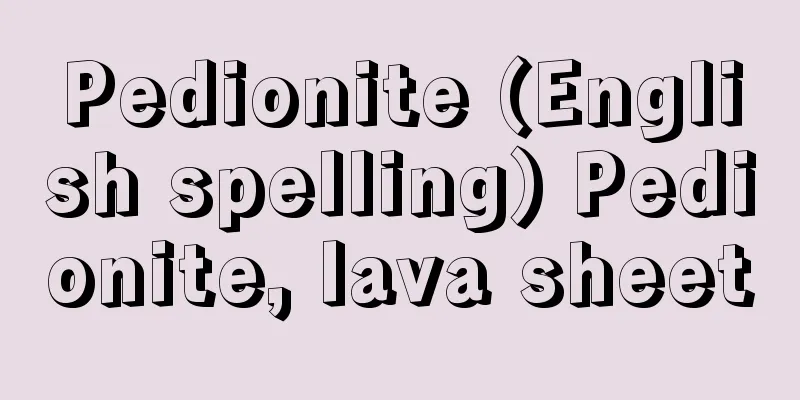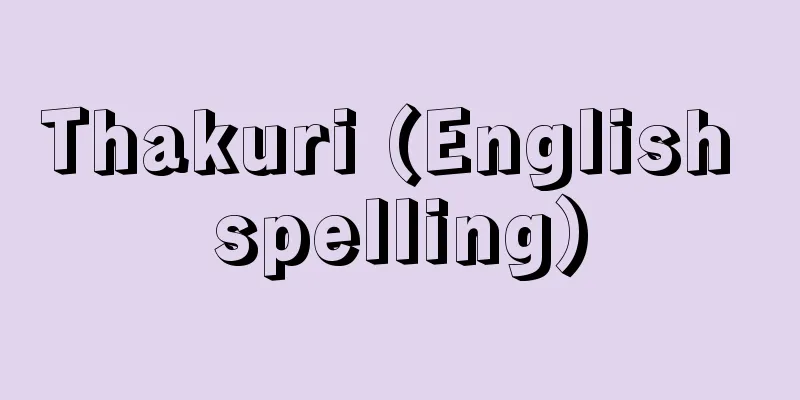Polishing - Kenma

|
A processing method in which a workpiece surface is rubbed with a grindstone made of hard granular or powdered substances (abrasive grains) or a binder-bonded grindstone while applying a constant pressure to the workpiece, resulting in the required surface finish. Examples of processes that use free abrasive grains, such as the former, include buffing and barrel processing, and are used when the quality of the finished surface is more important than dimensional accuracy. Examples of processes that use fixed abrasive grains include honing and superfinishing (processing methods to obtain smoother, more precise finished surfaces). Abrasive processing is a general term for processing methods that use abrasive grains. Abrasive processing can be broadly divided into processing methods that use fixed abrasive grains (grinding stones or abrasive cloths and paper) (broadly known as grinding processing) and processing methods that use free abrasive grains. Abrasive processing began with "polishing" using the latter, and has developed to include processing methods using fixed abrasive grains such as grinding stones and stick grinding stones. Therefore, abrasive processing was thought of as finishing the surface of the workpiece by rubbing it, and the term "polishing" was used. However, it has become clear that abrasive processing does not only have a polishing or abrasive action, as abrasive grains also generate cutting chips, just like metal cutting in cutting with a tool or milling, and the term "grinding" has come to be used specifically for processing methods that use fixed abrasive grains. However, even when using fixed abrasive grains, processing methods that mainly involve polishing while applying a certain pressure to the workpiece are called polishing processing. As for grinding, there was a time when the term "polishing" was used to refer to tool grinding, as in "intensive tool grinding," but nowadays, as mentioned above, a clear distinction is made. In painting terminology, the term "polishing" is also used for the series of tasks performed at each stage of the painting process, namely "sharpening" and "polishing." [Shimizu Shinji] [Reference items] | | | | | | |Source: Shogakukan Encyclopedia Nipponica About Encyclopedia Nipponica Information | Legend |
|
硬度の高い粒状または粉末状の物質(砥粒(とりゅう))やそれらを結合剤により固定した砥石を用いて、工作物に一定圧力を加えながら、加工物表面をこすり仕上げ、所要の仕上げ面品質にする加工法。前者のような固定しない遊離砥粒を用いるものとして、バフ加工、バレル加工などがあり、寸法精度よりも仕上げ面品質が重視される場合に用いる。固定砥粒を用いるものとしては、ホーニングや超仕上げ加工(より滑らかで、精度の高い仕上げ面を得るための加工法)などがある。 砥粒を用いる加工法を総称して砥粒加工という。砥粒加工を大別すると、固定砥粒(砥石または研磨布紙(ふし))を用いる加工法(広義の研削加工)と、遊離砥粒を用いる加工法がある。砥粒加工法は後者を用いる「みがき」で始まり、研削砥石やスティック砥石のような固定砥粒による加工法も加わり発展してきた。したがって、砥粒加工は、加工物表面をこすり仕上げるものと考えられ、「研磨」という術語が使われていたが、現在では、バイト削りやフライス削りの金属切削と同様に砥粒も切屑(きりくず)を発生しており、みがき、つまり研磨作用のみではないことが明らかとなり、とくに固定砥粒を用いる加工法に対しては「研削」というようになった。しかし、固定砥粒を用いる場合でも、工作物に一定圧力を加えながら仕上げるみがきを主体とする加工法に対しては研磨加工とよんでいる。 また研削加工についても、昔の名残(なごり)で、「工具の集中研磨」などと、工具の研削に対しては研磨という術語が使われていた時代もあったが、現在では、上述のように明確に区別されている。塗装用語でも研磨という術語が、塗装工程中の各段階で行われる一連の作業の「とぎ」と「みがき」に対して用いられている。 [清水伸二] [参照項目] | | | | | | |出典 小学館 日本大百科全書(ニッポニカ)日本大百科全書(ニッポニカ)について 情報 | 凡例 |
>>: Kenponashi - No health insurance
Recommend
Mitsune Oshikouchi - The Three of Oshikouchi
A poet of the early Heian period. Compiler of the...
radar area correlation guidance
...This method is used in the American cruise mis...
Academie des Beaux Arts - Academie des Beaux Arts
Please see the French Academy of Arts page. Sourc...
Foot
During the Muromachi and Sengoku periods, small me...
"Asakusa Red Gang" - Asakusa Red Gang
…During the Great Kanto Earthquake, the eighth fl...
Franklin
...Yellowknife is the provincial capital. It occu...
Maginot Line (English: Ligne Maginot, French)
A long fortified line along France's northeas...
Semantic field
...However, this type of analysis has progressed ...
Stalino
...Population: 1,160,700 (1991). Until 1924, it w...
Breeding Farm - Breeding Farm
...There are some dairy businesses in urban areas...
chemical milling
…Broadly speaking, it is a processing method that...
Yeh Shih (English spelling)
[Raw] Shaoxing 20 (1150) [Died] 16th year of the J...
Newgrange
…Irish art began with the Neolithic megaliths tha...
Araebisu
⇒ Nomura Kodo Source: Kodansha Digital Japanese Na...
mastic
…An aromatic gum resin obtained from the Boswelli...









